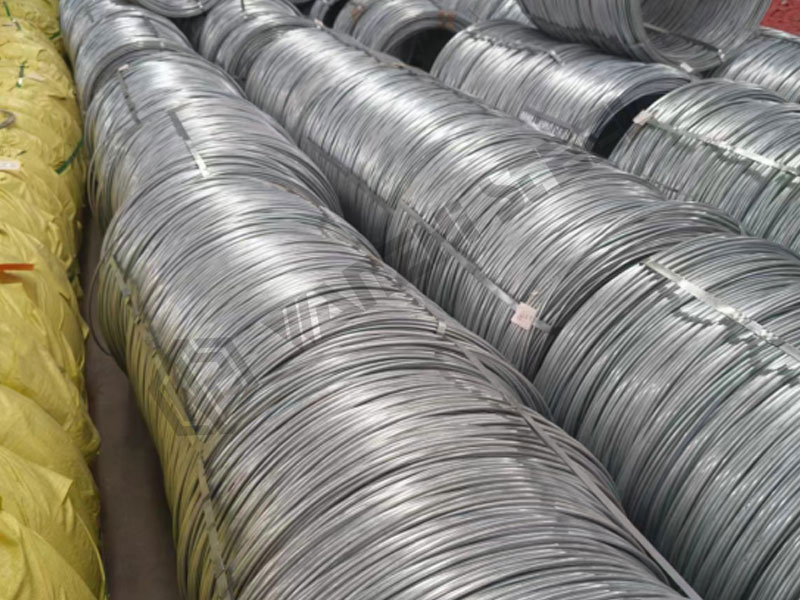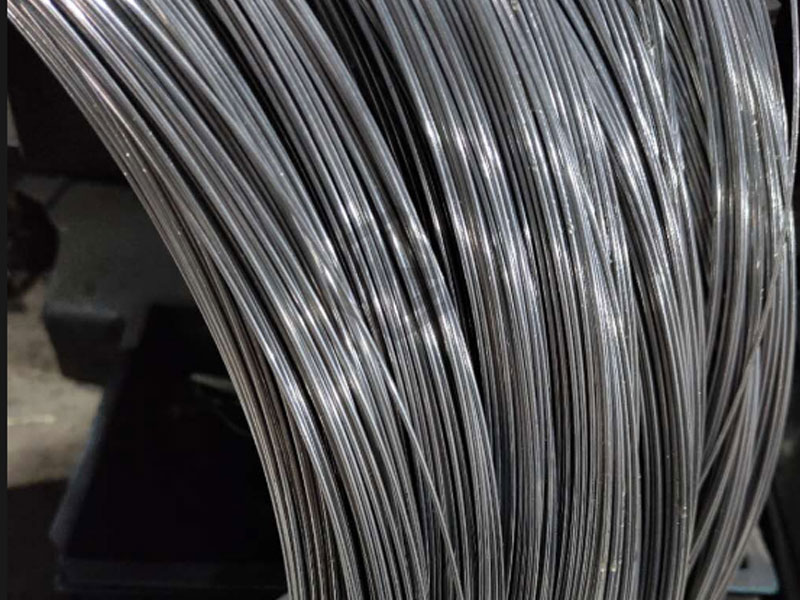Steel wire serves as a fundamental material for applications such as binding and securing, structural support, transmission and conductivity, as well as daily and consumer goods. Both galvanized wire and stainless steel wire are widely used due to their high strength, moderate toughness, malleability, and excellent rust resistance. Today, let’s explore their differences and suitable applications through material composition, rust prevention mechanisms, performance characteristics, and more. This understanding will help us reduce costs and maximize their effectiveness.


Galvanized Steel Wire
When should we choose galvanized wire as raw material? First, galvanized wire uses high-quality carbon steel (such as Q195, Q235) as its base material. The steel is drawn into wire form, then undergoes hot-dip or electro-galvanizing to form a protective zinc coating on its surface. Galvanized wire is inexpensive and lightweight, typically costing only 1/2 to 1/3 the price of stainless steel wire of the same specification. For ordinary, low-corrosion environments where cost-effectiveness is prioritized, galvanized steel wire is an excellent choice.
Rust Prevention Principle
- Galvanized wire achieves rust prevention through sacrificial protection from its outer zinc layer. Thicker zinc coating enhances corrosion resistance.
Characteristics
- Zinc layer provides sacrificial anode protection.
- Surface exhibits a bright white or dark gray zinc coating.
- Excellent flexibility, facilitating bending and weaving.
Performance
- Rust Resistance: Good. Performs well in dry atmospheres and rural settings, meeting standard rust prevention needs without extreme conditions.
- Strength/Hardness: High.
- Heat Resistance: Poor. Zinc has a low melting point (approx. 420°C) and oxidizes/flakes at elevated temperatures.
Advantages
- Low cost with high cost-effectiveness.
- Mature galvanizing technology with widespread application.
- Reliable initial rust prevention.
- Comprehensive range of types and specifications for diverse selection.
Applications
- Binding & Packaging: Bundling, tie wires
- Construction: Wire mesh, plastering mesh, rebar tying
- Agriculture: Aquaculture fencing, grape trellises
- Household goods: Coat hangers, fencing, shopping baskets
Stainless Steel Wire
When is stainless steel wire recommended? Stainless steel wire is manufactured using stainless steel ingots (such as 304 or 316) as raw material, undergoing processes like drawing and annealing. Its production involves more complex manufacturing steps and higher costs for raw materials (alloy elements like nickel and chromium), resulting in a higher price point. It is suitable for applications demanding high corrosion resistance and hygiene standards, or where long-term durability is essential.
Rust Prevention Principle
- Stainless steel achieves rust resistance through the chromium-based oxide film formation.
Characteristics
- Surface exhibits natural metallic luster (silver-bright).
- Combines strength, hardness, and moderate toughness depending on grade.
- Intrinsically corrosion-resistant.
Properties
- Rust Resistance: Excellent.
- Strength/Hardness: Good.
- Heat Resistance: Superior. (Withstands hundreds of degrees Celsius without performance degradation.)
Advantages
- Exceptional corrosion resistance and extended service life.
- Aesthetically pleasing with sustained metallic luster.
- Hygienic and non-toxic.
- Comprehensive mechanical properties with low maintenance costs.
Applications
- Marine engineering, coastal facilities (316 stainless steel wire recommended)
- Food processing, medical devices, kitchenware
- Chemical and pharmaceutical industries
- High-precision springs, precision instrument components
- Premium outdoor furniture, decorative items
Galvanized Wire vs. Stainless Steel Wire Procurement Guide
Galvanized steel wire offers superior cost-effectiveness for rust prevention. Stainless steel wire delivers outstanding performance but typically costs 2-3 times more than galvanized wire, or even higher.
Usage Environments
- Galvanized steel wire suits dry, inland, pollution-free settings (e.g., indoor spaces, standard farmland). Stainless steel wire is better suited for humid, rainy, acid rain, or industrial environments like coastal areas, saline-alkali soils, chemical plant vicinity, swimming pool equipment, etc.
Hygiene and Aesthetic Requirements?
- Galvanized wire meets basic needs like bundling and protection. For food contact, medical devices, or high-end decoration, stainless steel wire is essential—it resists bacterial growth and maintains a long-lasting shine.
Budget
- For projects prioritizing minimum cost over lifespan, galvanized wire is the preferred choice. For applications emphasizing long-term durability and low maintenance, stainless steel wire is recommended.
Wanzhi Group is a Chinese steel factory supplier offering a comprehensive range of wire products including annealed wire, cold-drawn steel wire, stainless steel wire, galvanized steel wire, and more. Contact us with your requirements to receive a free quote and tailored solutions!
